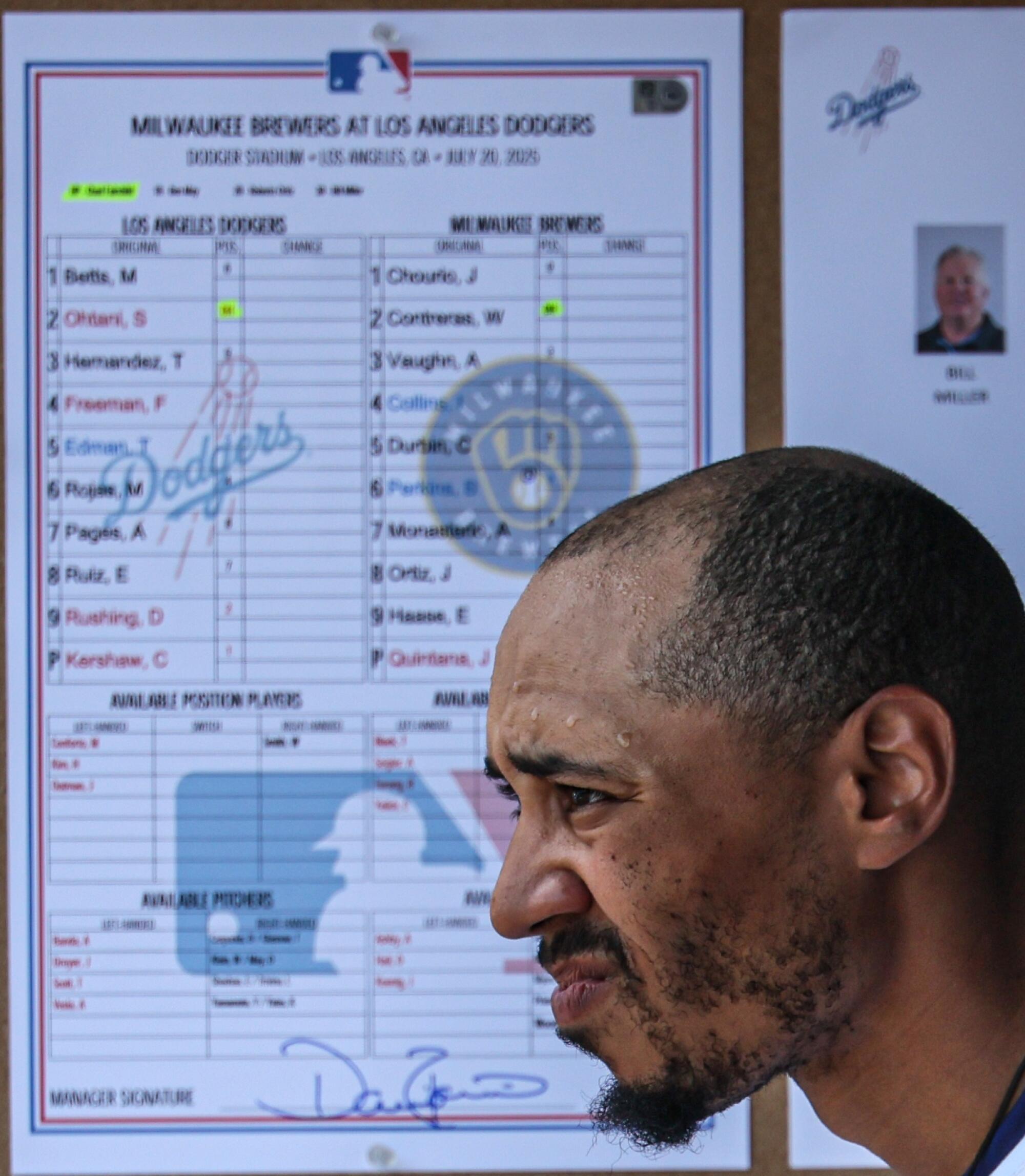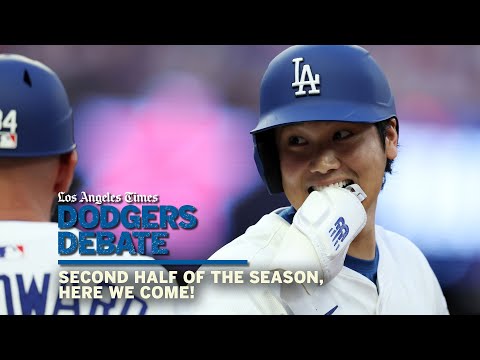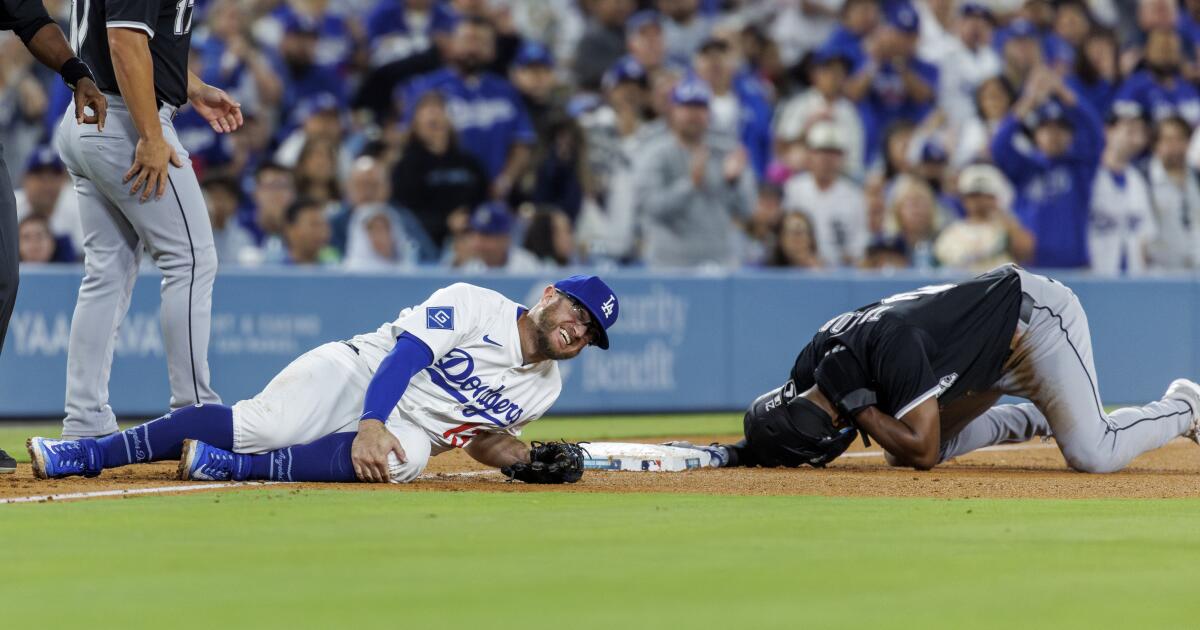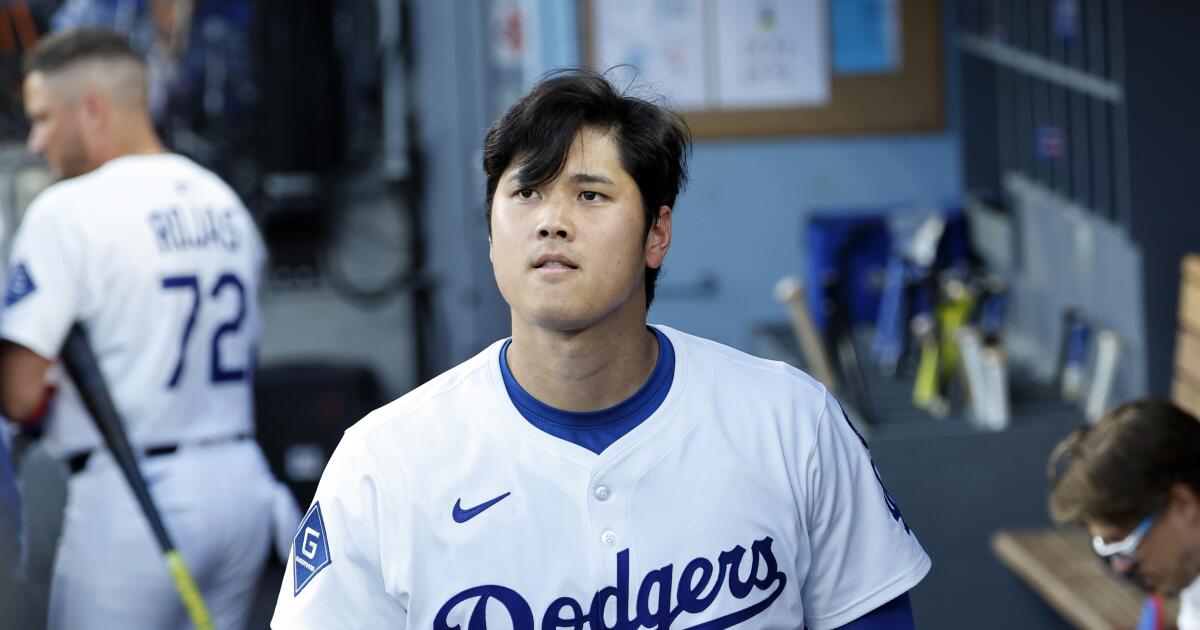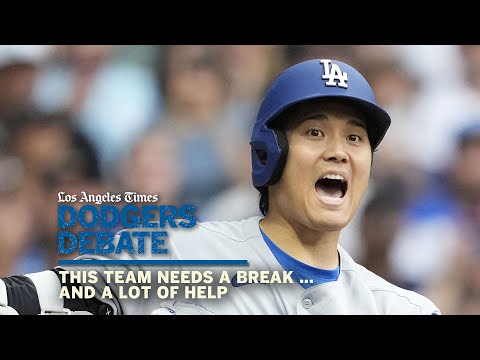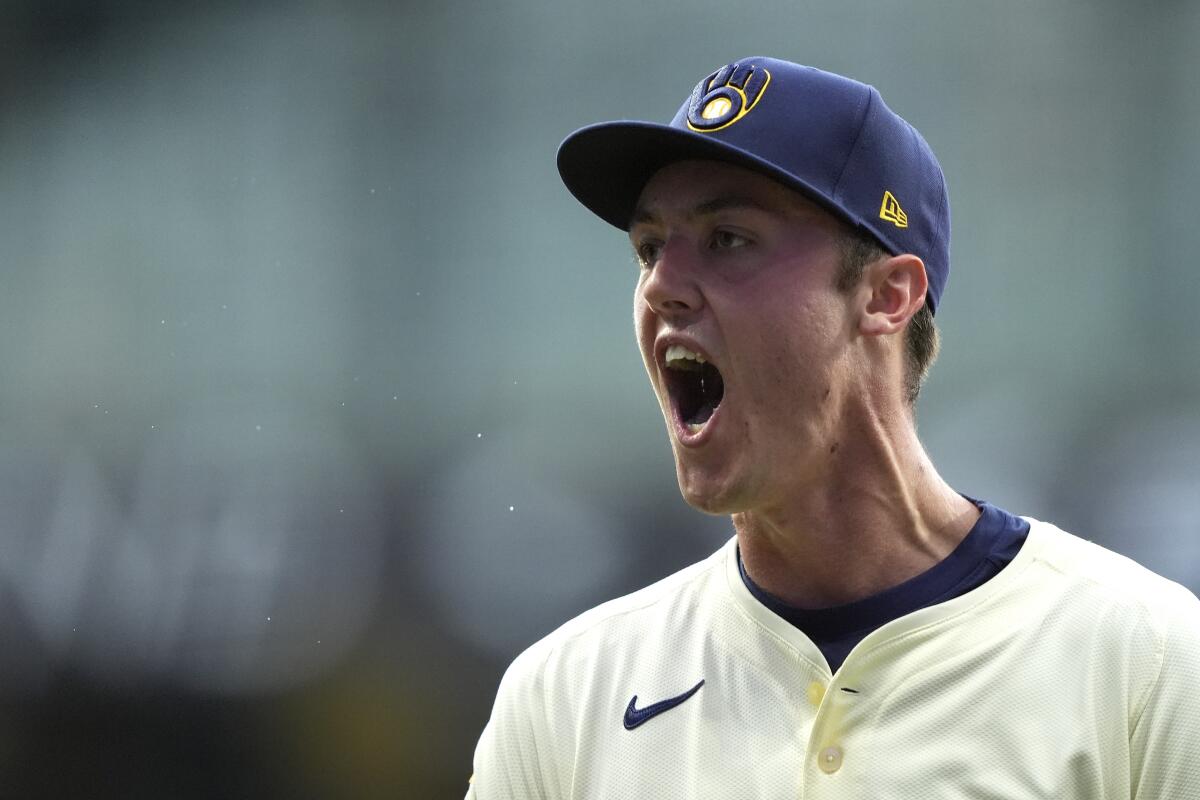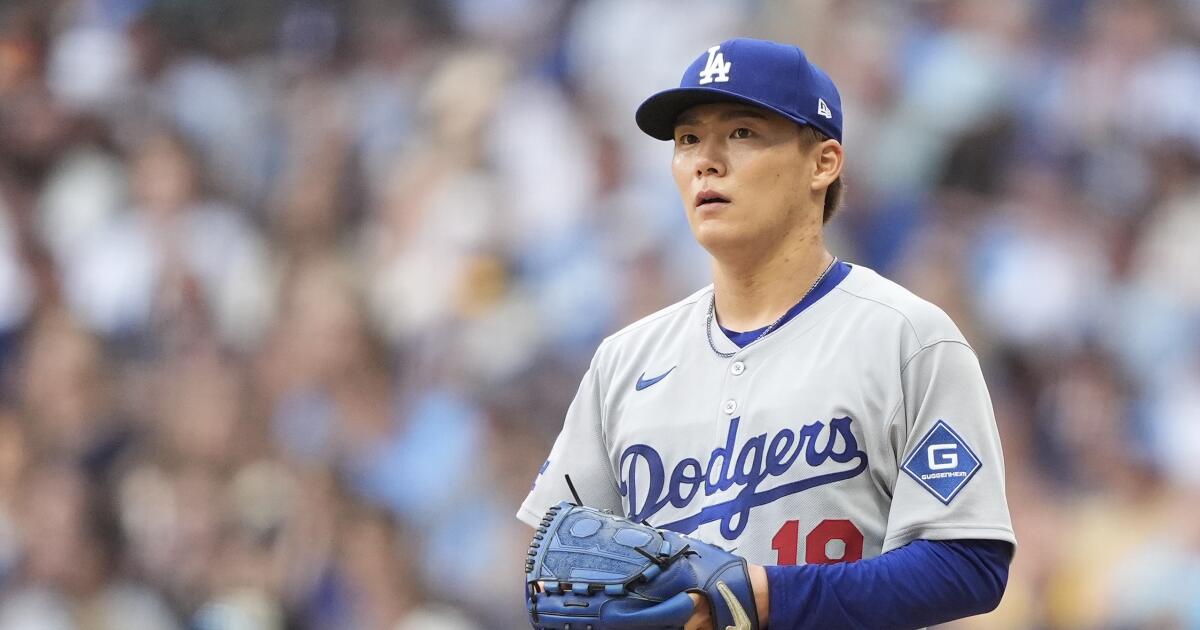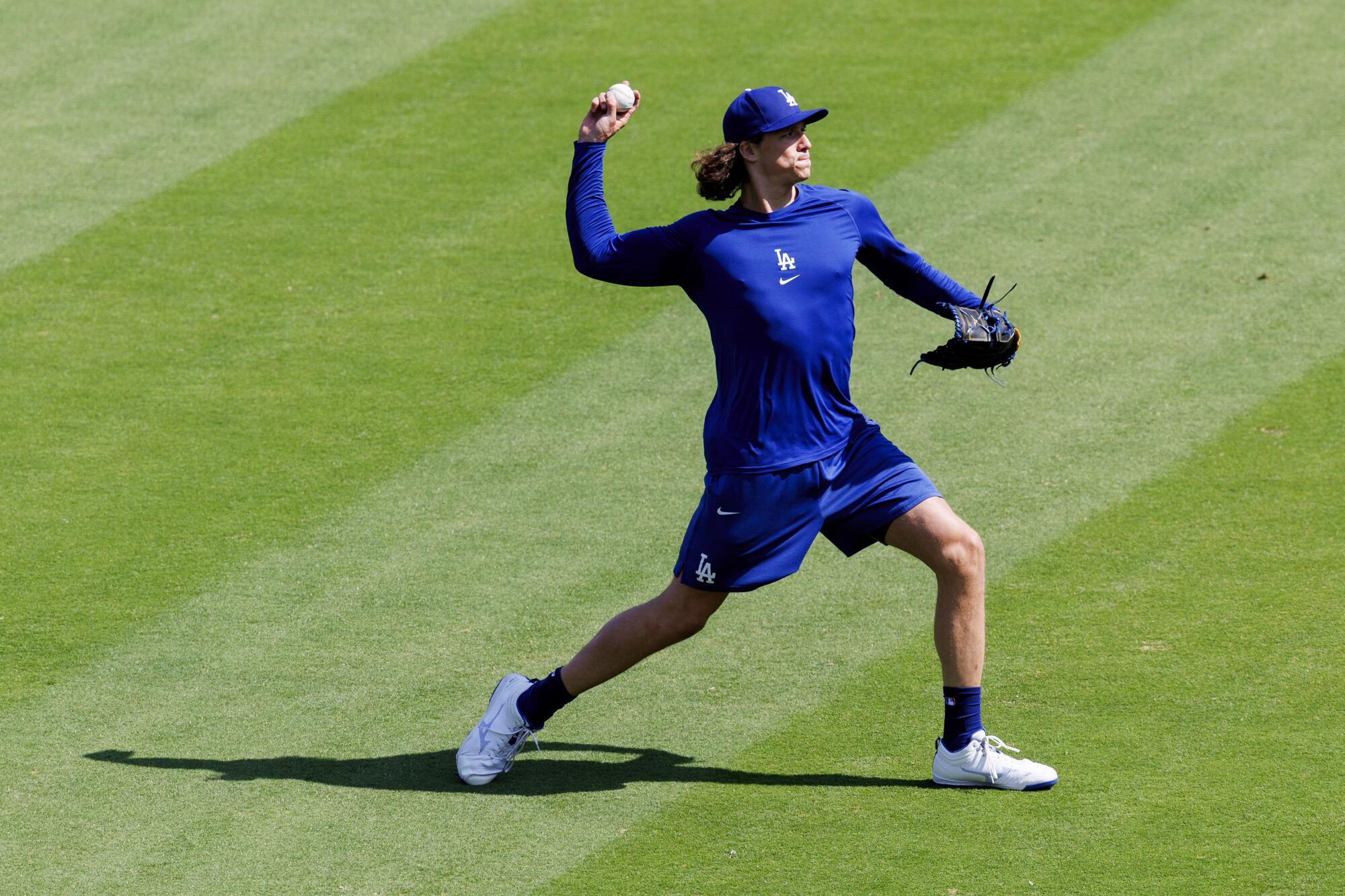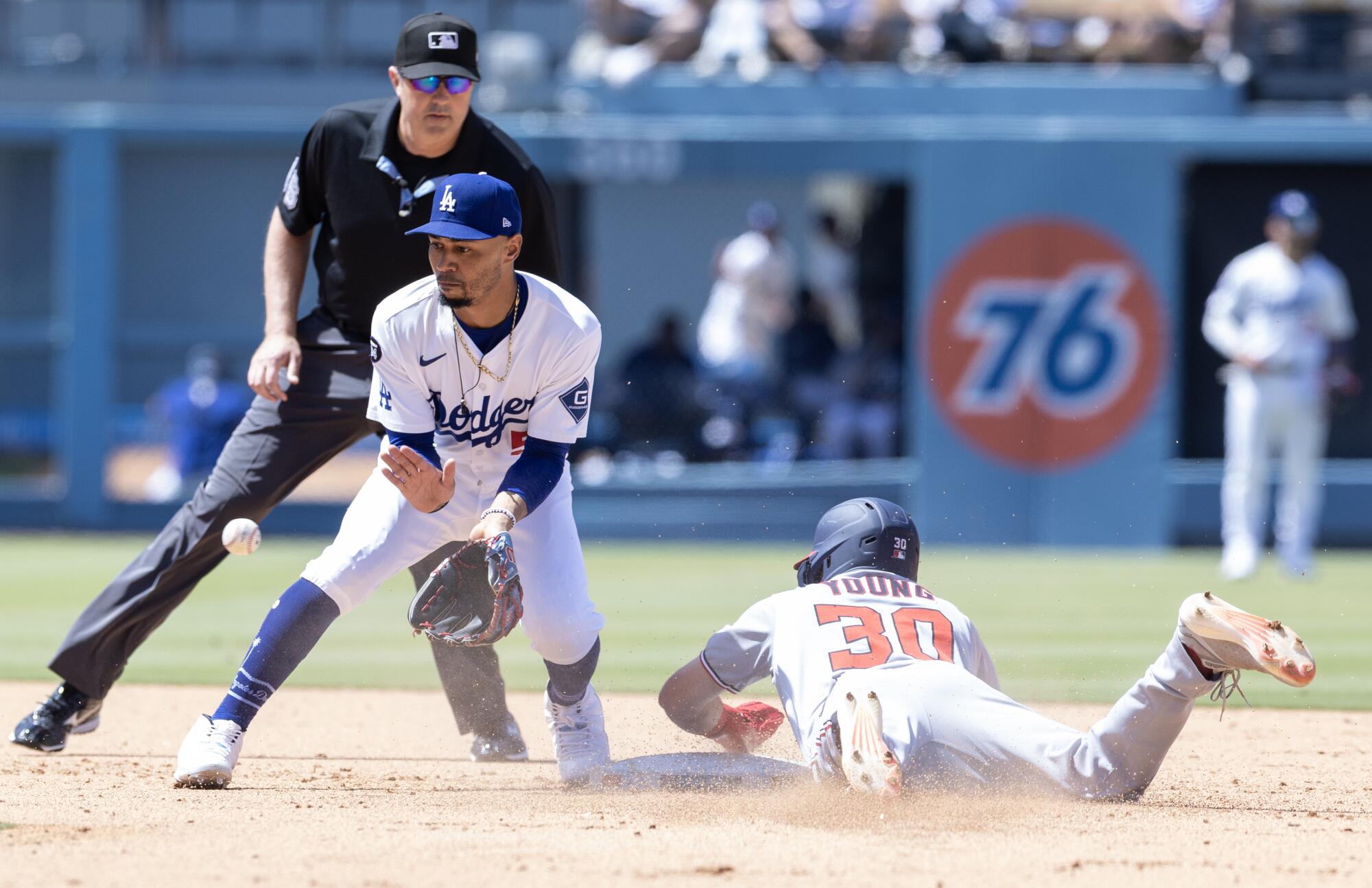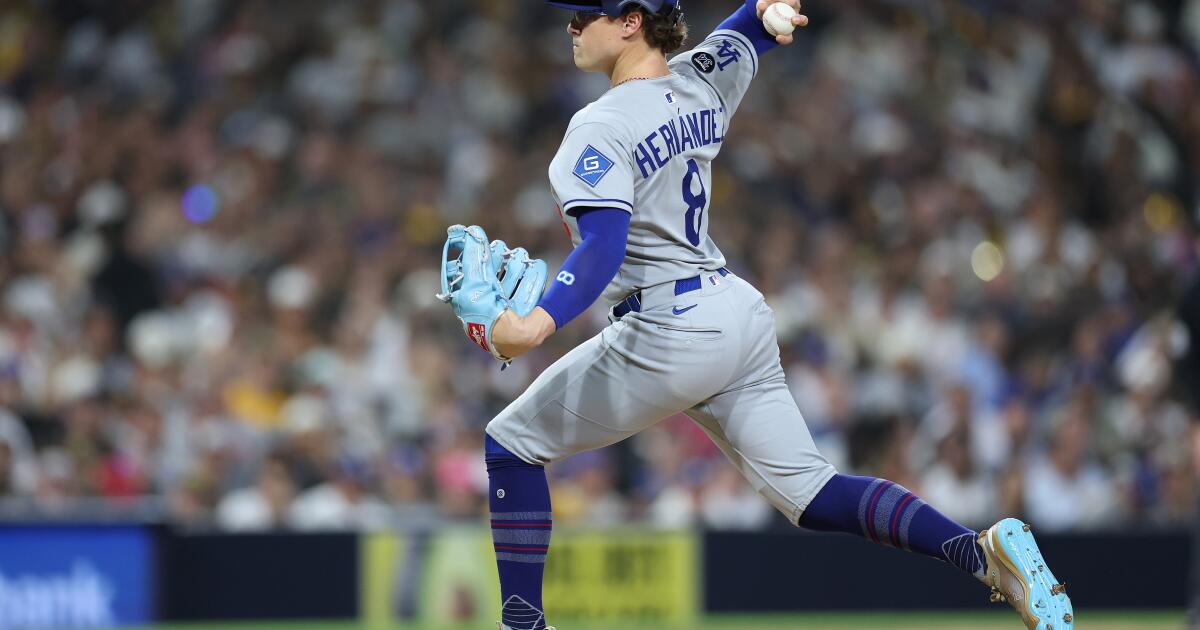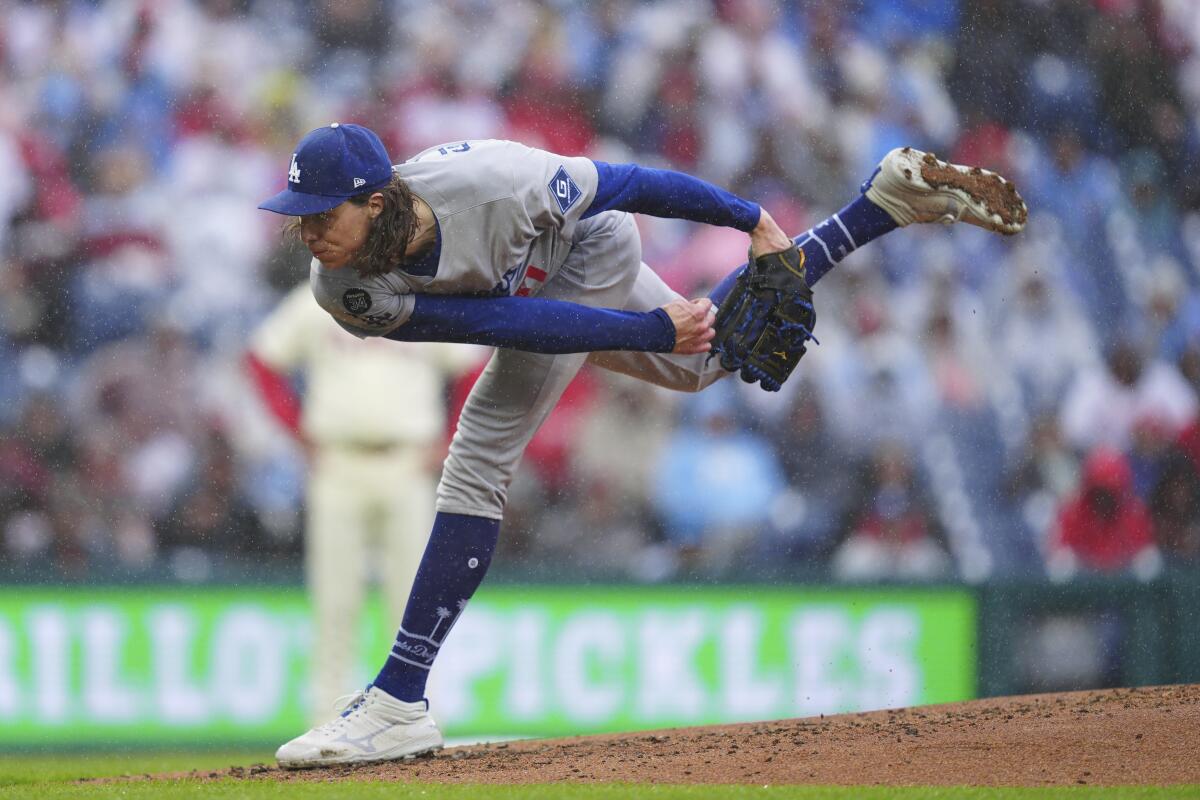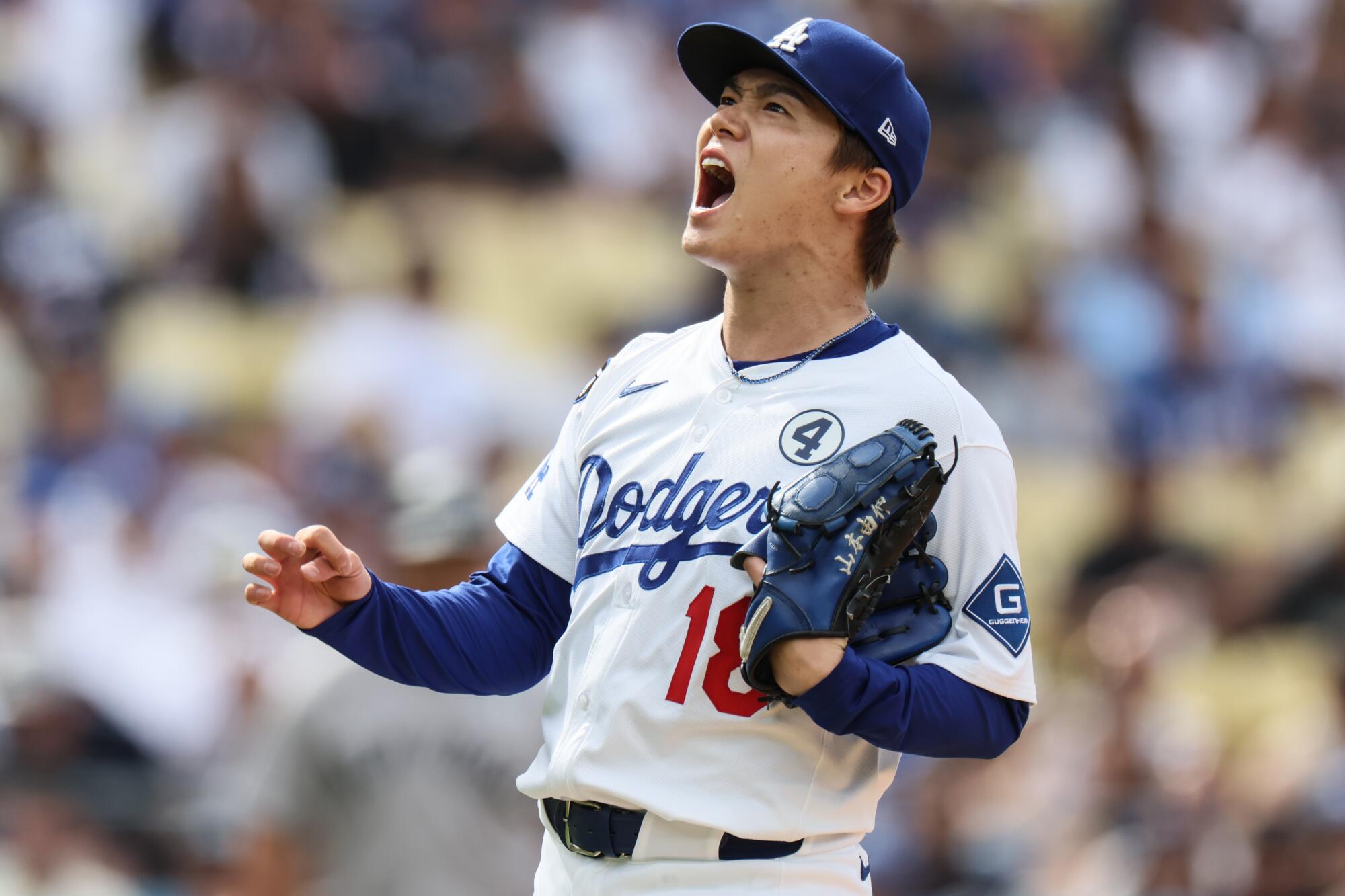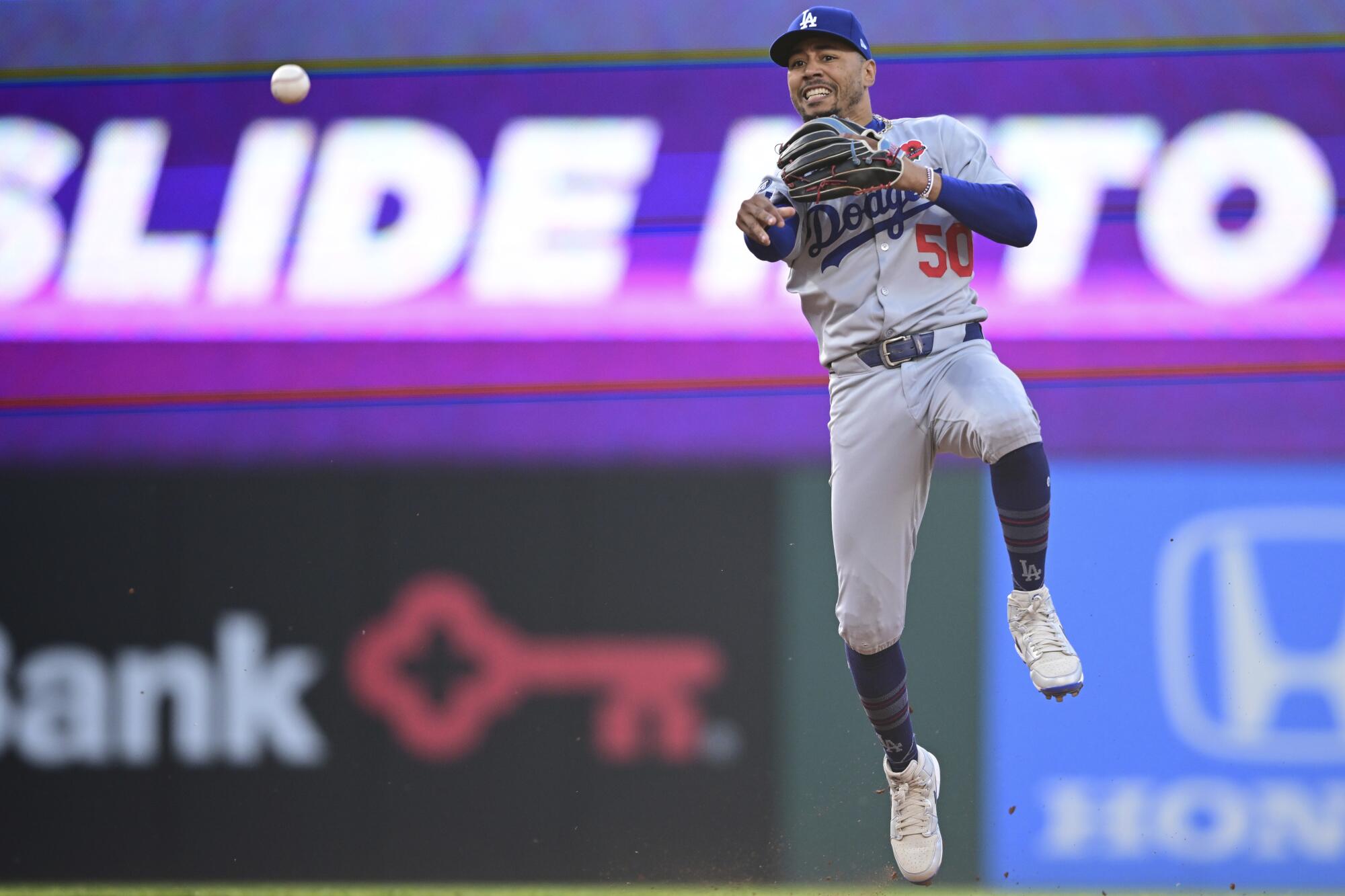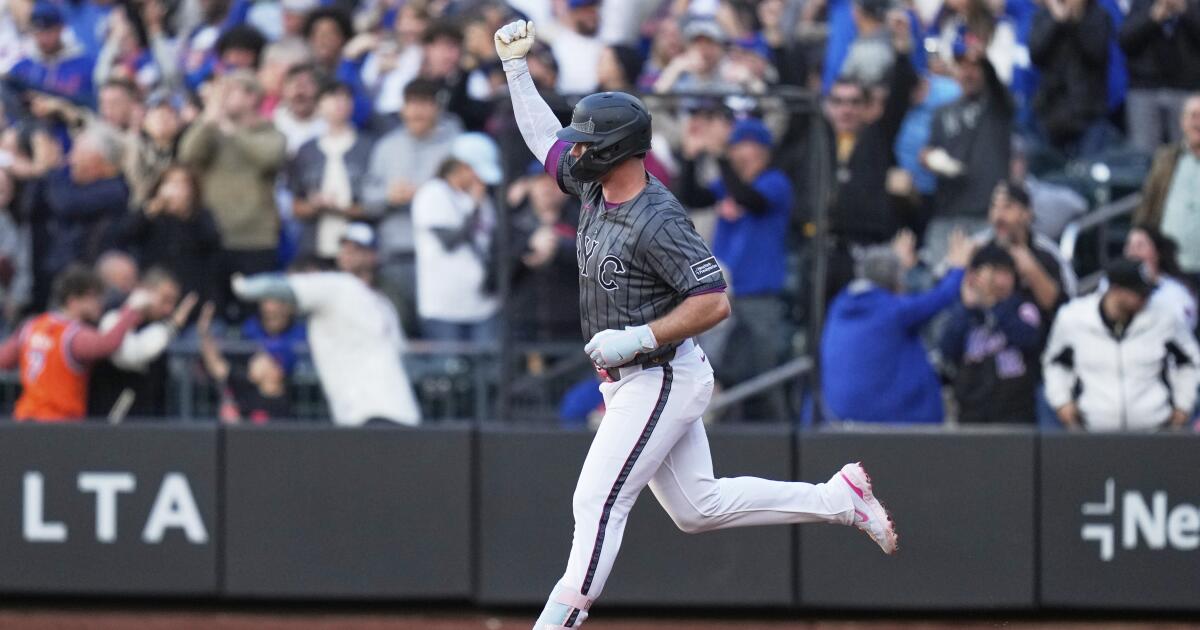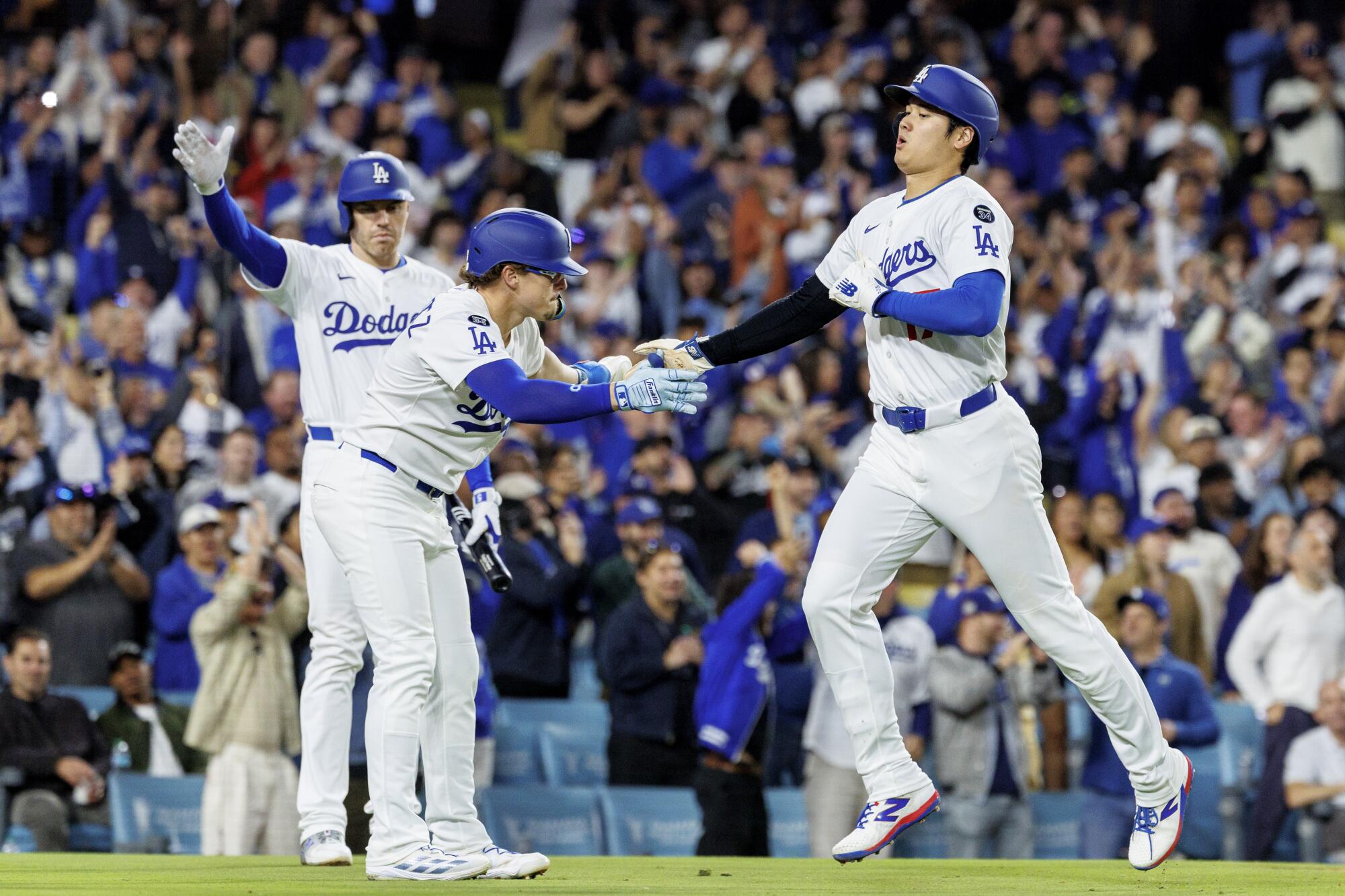How Dodgers are trying to unravel the mystery of Mookie Betts’ slump
The day off was unanticipated.
The change to the lineup was even more of a surprise.
In what has become a season-long struggle by Mookie Betts and Dodgers coaches to get the slumping superstar back on track, this weekend brought the most glaring examples of experimentation yet.
First, on Saturday, manager Dave Roberts gave Betts an unexpected off day and providing what he felt was a needed mental reset after sensing Betts — who missed the All-Star Game for the first time in a decade this year — was still off despite his week-long break.
Then, on Sunday, Roberts gave the veteran slugger an unexpected challenge: Bumping him up from the two-hole to the leadoff spot in the batting order in hopes it would trigger something amid a career-worst season at the plate.
“Looking at how things are going, where Mookie is at emotionally, mechanics-wise, all in totality,” Roberts said, “I felt that giving him a different look in the lineup, hitting him at the top, something he’s obviously been accustomed to throughout his career, will put him in a mindset of just [trying] to get on base and just trying to take good at-bats.”
“There’s a lot of internal kind of searching that goes on with the mechanics and things like that,” Roberts added. “But I personally do feel that the external part of it — hitting at the top of the order, having a mindset to get on base — I think will help move this along better.”
It all served as the latest confounding chapter in what has been a trying season for Betts and his once-potent swing, the newest effort by the club to ease the frustration that has weighed on his mind amid a summer-long slump — while waiting for his mechanics to finally get back in sync.
Mookie Betts sits in the dugout in the first inning before batting against the Milwaukee Brewers on Sunday.
(Robert Gauthier / Los Angeles Times)
“This is a process I’ve never been through,” said a dejected Betts, who entered Monday sporting a .240 batting average (ranking 120th out of 158 qualified MLB hitters), .684 OPS (132nd) and 11 home runs (tied for 89th), to go with well-below-league-average marks in underlying metrics like average exit velocity (29th percentile among MLB hitters), hard-hit rate (20th percentile) and bat speed (12th percentile).
“I don’t have any answers,” he continued. “I don’t know how to get through this. I don’t know. I’m working every day. Hopefully it turns.”
The leadoff exercise started with mixed results Sunday. Betts singled in the third inning, one at-bat before new No. 2 man Shohei Ohtani hit a home run. But, in a failed ninth-inning rally that sent the Dodgers to a series sweep against the Milwaukee Brewers, he finished a one-for-five day by lining out sharply to center field, ending the game with Ohtani stuck in the on-deck circle.
Betts will continue to lead off for the foreseeable future, with Roberts committing to keeping him at the top of the order — and Ohtani, the team’s previous leadoff hitter, in the two spot — at least until Max Muncy makes his expected return from a knee injury sometime next month.
“The only way we’ll know, we’ll find out, is once we do that for an extended period of time,” Roberts said. “I do think that there will be some fallout from that kind of external mindset of, ‘Hey, I’m hitting at the top of the order. My job is to get on base, set the table for Shohei and the guys behind him.’ I think that will lead to better performance.”
Until such a turnaround actually materializes, however, the search for answers to Betts’ struggles will go on, with the Dodgers continuing to try to unravel the mystery behind a sudden, unsettling slump no one saw coming.
“I just got to play better,” Betts said. “I got to figure it out.”
Indeed, while his superstar teammates were at All-Star festivities in Atlanta last week, Betts spent the break back home in Nashville, working on his swing at a private training facility.
In one clip that emerged on social media, Betts was seen doing one of the many drills that have helped him maintain offensive excellence over his 12 big-league seasons: Taking hacks with a yellow ball pressed snuggly between his elbows, trying to promote the fluid and connected motion that has eluded him this year.
“With Mookie, a lot of it has to do with how his arms and hands work, and getting his arm structure properly lined up,” hitting coach Robert Van Scoyoc said. “It sets up how the bat slots, and how his body sequences.”
For Betts, a 5-foot-10 talent who has long exceeded expectations as one of the sport’s most undersized sluggers, such mechanical efficiency has always been paramount.
As he noted early this season, when his slump first came into focus in early May, he has never had the same margin for error as some of the sport’s more physically gifted star hitters. He can’t muscle doubles or hit home runs off the end of his bat. He can’t afford to have a bad bat path or disjointed swing sequence and be the same hitter who, just two years ago, batted .307 with 39 home runs.
“I can’t, unfortunately, not have my A-swing that day but still run into something and [have it] go over the fence or whatever,” Betts said back then. “Even when I have my A-swing, if I don’t get it, it’s not gonna be a homer. If I don’t flush that ball in that gap, they’re gonna catch it.”
And this season, much to his chagrin, flushing line drives and cranking big flies has become a frustrating rarity.
Identifying the reason why has led to countless potential theories.
At the start of the year, Betts believed he created bad swing habits while recovering from a March stomach bug that saw him lose 20 pounds and some of his already underwhelming bat speed.
But as he tried reverting to mental cues and mechanical feels that had recalibrated him in the past, nothing seemed to click in the same way they once did.
“The cues and feels that I’ve used my whole life, in Boston and L.A., just don’t work anymore,” he said this weekend. “So I’m just trying to find out who I am now, what works now.”
Some of that, of course, could be attributed to age. Betts will be 33 by the end of this season. He is coming up on 1,500 career games. Inevitably, even players of his caliber eventually start to decline physically.
Roberts, however, framed it more through the lens of evolution. On the one hand, he said of Betts, “I know he’s still in his prime. I know he’s as strong as he’s been in quite some time.” However, the manager added, “his body has changed and will continue to change,” requiring Betts to find new ways to maximize the power the team still believes he possesses.
“That’s the nature of hitting,” Van Scoyoc said. “He has to find something for him that works organically, that gets him lined up again.”
This dynamic is why, to both Betts and the Dodgers, his full-time move to shortstop this season hasn’t been to blame.
Betts has repeatedly pushed back against that narrative, pointing to the MVP-caliber numbers he posted while playing the position during the first half of last year (before a broken hand cost him two months and forced him to return to right field for the Dodgers’ World Series run) and the two-week tear with which he started this season (when he batted .304 with four home runs over his first 15 games).
Mookie Betts and the Dodgers continue to insist his season-long slump at the plate has little to do with his full-time move to shortstop.
(Robert Gauthier/Los Angeles Times)
And though his new defensive role has come with some added challenges — Betts said on his Bleacher Report podcast last month that his daily pregame workload has increased while playing shortstop, to the point “it probably does weigh on you a little bit hitting” — he has also emphasized the confidence he has gained from his defensive improvements; his shortstop play serving as the one thing that has gone right in a season of offensive misery.
“I just can’t see that you go out there and stick him in right field tonight and he’s going to throw out two hits or three hits, or he goes to second base and he’s going to go on a heater,” Roberts echoed earlier this month, before reiterating Sunday that the team has not considered changing Betts’ position. “That’s hard for me to kind of imagine. It’s a fair ask. But I just don’t see that as the case.”
Instead, the focus has remained not only on Betts’ flawed swing mechanics, but the resulting side effects it has had on his approach at the plate.
One stat that jumped out to Roberts recently: In Betts’ last 99 plate appearances, he has walked only one time — a shockingly low number for a hitter with a walk rate of nearly 11% over his career.
To Roberts, it’s a sign that Betts, in his ongoing search to get his swing synced up, is failing to accomplish the even more fundamental task of working good counts and waiting out mistakes.
“If you’re ‘in-between’ on spin versus velocity, and [getting in bad] counts, you’re not as convicted [with your swing],” Roberts said, tying all of Betts’ problems into one self-fulfilling cycle that has only further perpetuated his lack of results. “So my eyes tell me he’s been ‘in-between’ a lot.”
Which is why, in recent weeks, Roberts had started to mull the idea of moving Betts into the leadoff spot.
After all, the manager hypothesized, if Betts can’t find his swing by grinding in the batting cage and analyzing his mechanics — as he did during his off day on Saturday — then maybe reframing his mindset in games can better help him get there.
“It speaks to how much faith I have in him as a ballplayer,” Roberts said. “To, where he’s scuffling, not move him down but ironically move him higher in the order. “I think that kind of support, and the different way that he’ll see the lineup as it’s presented each day, will kind of lead into a different mindset and I think that’ll be a good thing for all of us.”

For now, the Dodgers can only hope.
With Muncy still out, Freddie Freeman having his own recent slump compounded by a ball that hit him in the left wrist on Sunday, and the Dodgers stuck in a current 2-10 spiral that has seen their once-comfortable division lead dwindle leading up to the trade deadline, they need the old Betts more than ever right now.
Thus far, the search for answers has met no end.
“It’s hard,” Betts said, “but I got to figure it out at some point.”
